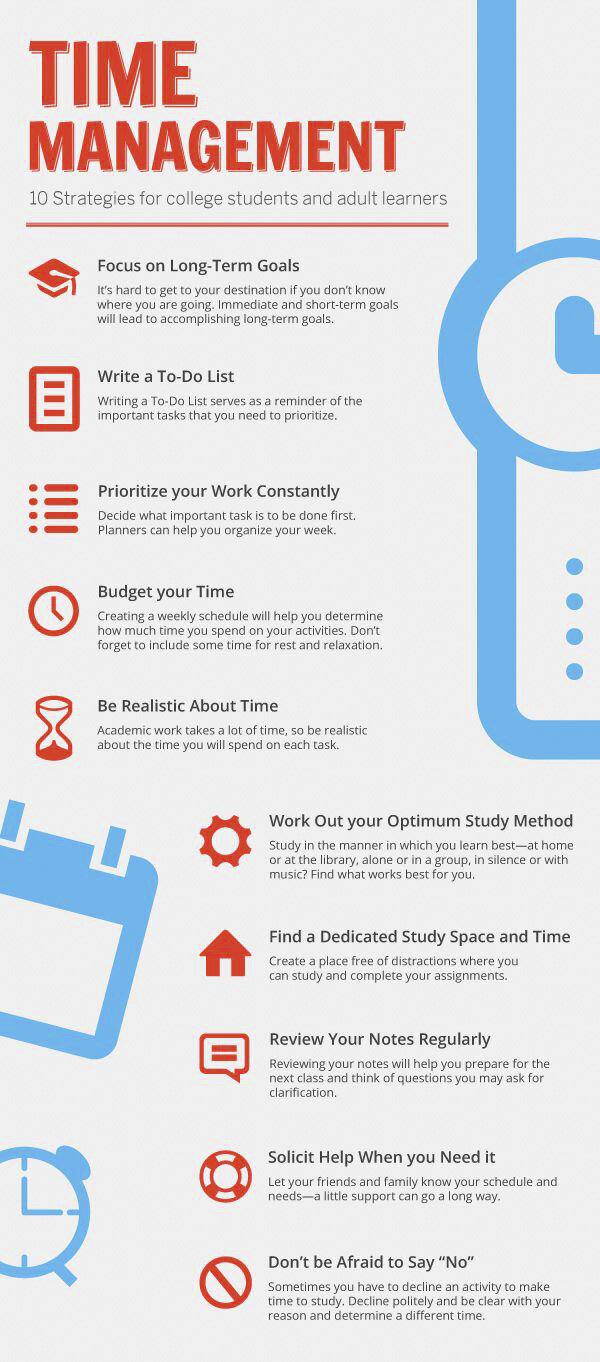Time Management
Time management helps you focus, be more productive, and accomplish more in a shorter period of time. Learn this crucial skill to lead a less stressful lifestyle and produce better work.
Time Boxing/Time Blocking
Time boxing is a very effective method for staying productive. It is the practice of dividing your day into blocks of time and dedicating each block to a specific task.
Use small blocks of time productively
Study during the car or bus ride.
Make audio recordings of your notes and listen to it in the car or bus.
Eating at a restaurant takes a long time. Instead of going out to eat, make something simple at home.
Consider using a flashcards app or self-testing app whenever a few minutes become available, like waiting for an appointment, waiting in line, waiting to pick up food, etc.
Mono-task, don’t multitask
You may think you are saving time by multitasking, but it has been scientifically proven that your brain cannot effectively switch between tasks. Multitasking actually causes you to lose productivity. Studies have also shown that we have a lower retention rate when we try to learn something while multitasking. Get into the habit of focusing on one task at a time.
Conquer Procrastination
Break down your project into smaller tasks to prevent feeling overwhelmed.
Keep yourself accountable and reward yourself for completing tasks.
Set deadlines for yourself, and follow them.
Limit distractions. Clear your desk, delete tabs unrelated to your work, and turn your phone on “Do Not Disturb” mode.
Try the Pomodoro Technique. Work for 25 minutes, then take a 5 minute break. To learn more, click here.
Eat the frog. Mark Twain said, “Eat a live frog the first thing in the morning and nothing worse will happen to you the rest of the day.” Start with your most difficult task, the one that will cause you to procrastinate. Doing this task first will make the rest seem easier and will give you momentum to keep working.
SMART Goals
Proper time management begins with setting goals before you begin working. The SMART Goal technique is a popular goal-setting technique.
Write detailed goals that are:
Specific – clearly defined desired outcome, what you want to achieve
Measurable – there must be away to measure progress
Achievable – the goal can be met with available resources
Relevant – it must fit a bigger picture and you must know why you want to achieve something
Time-bound – a clear deadline for when the goal will be achieved
The Bullet Journal Method
Using this method, you can track the past, organize the present, and plan for the future. To learn the process, watch the following tutorial.








